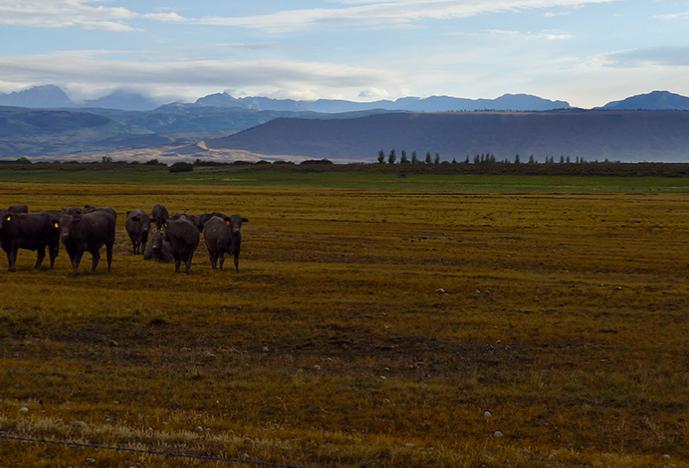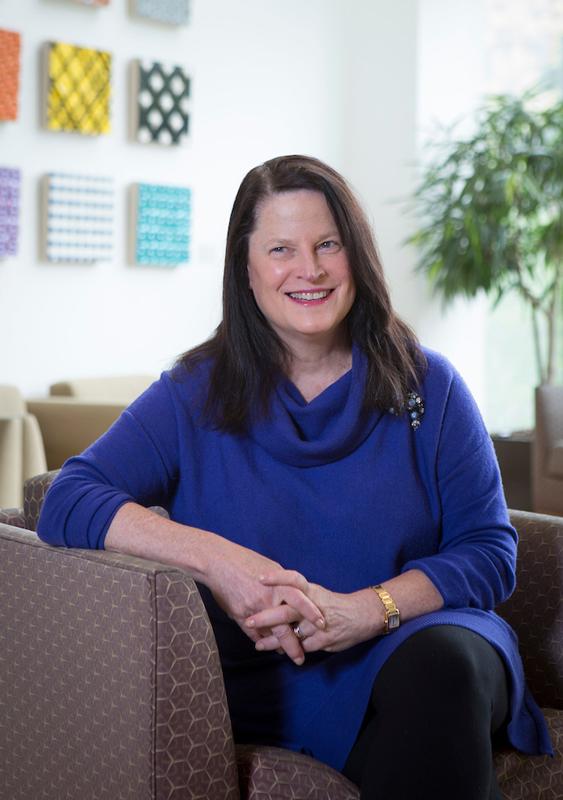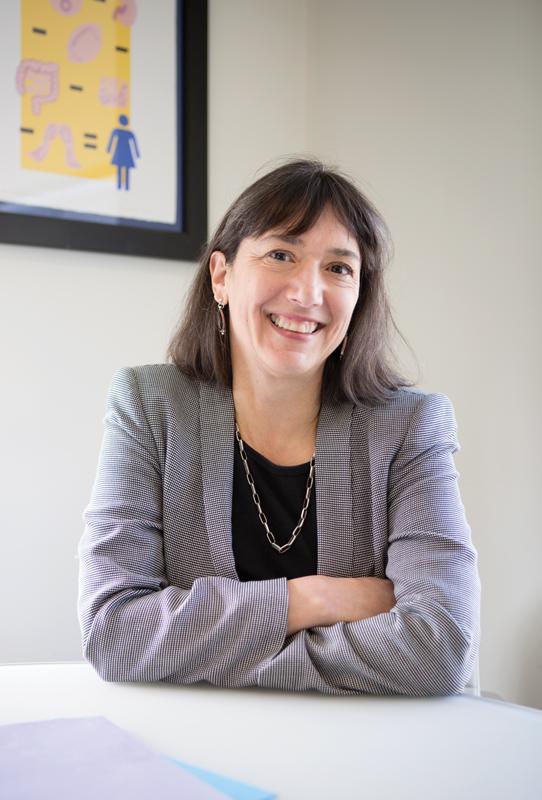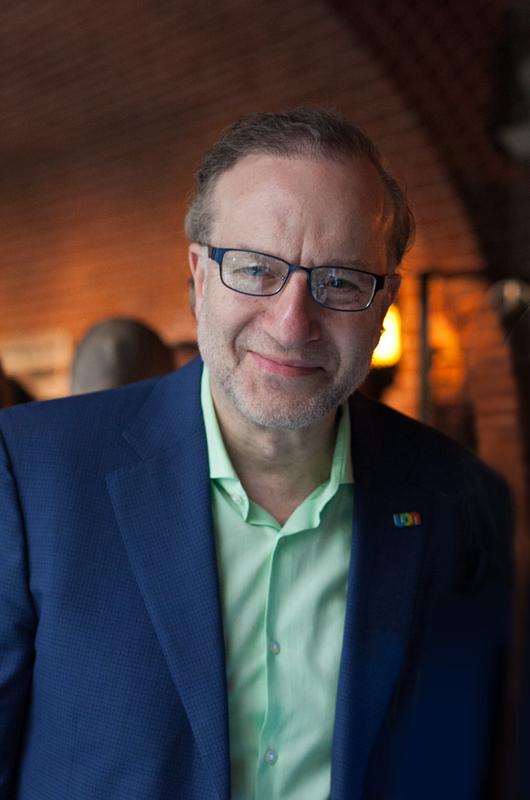In the Picture
Researchers act to improve geographic diversity in clinical studies
- 12 minute read
- Feature

Wyoming range ringed by Wind River Mountains
For three generations, Monica Bertagnolli’s family has raised cattle in Wyoming. Their ranch, the White Acorn, undulates across 4,800 acres at the base of the Wind River Mountains. The family’s history is twined to the land; separation is temporary, difficult, nearly inconceivable. When Bertagnolli’s father was diagnosed with cancer, he drove more than eight hours round trip to get care. And when her mother’s abdominal aorta ruptured, she was driven over the surrounding mountains to a regional hospital. That hospital, however, didn’t have any blood for transfusion, so Bertagnolli’s mother was airlifted to Casper for surgery. She survived the catastrophe—the rural health care system came through for her.
Today, Bertagnolli, the HMS Richard E. Wilson Professor of Surgery in the Field of Surgical Oncology at Brigham and Women’s Hospital, spends most of her time in the Boston area, where, among her other responsibilities, she oversees multi-institutional cancer cooperatives. Although far from Wyoming, she advocates for rural communities as she helps shape, direct, and recruit participants for clinical studies.The outreach Bertagnolli does to rural communities fills a near void. Since 1993, the National Institutes of Health has required inclusion of women and racial and ethnic minorities in clinical studies it supports. Yet even as definitions of diversity have expanded to include sexual and gender minorities, children, and the older adults, one variable still struggles for recognition: zip code.
“Nobody with cancer wants to pick up and go to a trial in Boston or Chicago if they live in a small, rural community,” says Bertagnolli.
Evidence increasingly indicates that involving patients, practitioners, and investigators from rural and underresourced areas in all stages of clinical research expands access to experimental therapies, gives more people the chance to contribute to medical advancement, and uncovers differences in treatment response based on environmental and cultural factors. Encouraging diverse input also raises the likelihood that communities can implement trial protocols and the resulting standards of care.
Given Boston’s chart-topping 185 trial sites per 10,000 people—nearly three times as many as the next city on the list—it would be easy for HMS to operate in an urban research bubble. Instead, the School is actively working to lower technological, cooperative, and administrative barriers to rural participation.

Trial Latitude
“We want there to be easier participation, regardless of where folks live,” says Barbara Bierer ’80, an HMS professor of medicine at Brigham and Women’s. “I think the sweet spot lies in empowering community physicians to advance medical knowledge as far as they are able.”
Studies indicate clinical trial enrollment rates among rural and underresourced communities lag behind the national average. Rural residents as a whole may be even more underrepresented in clinical research than racial and ethnic minorities. A study in Maryland flags rural residents and Blacks as the top two minority groups experiencing “serious gaps” in trial recruitment; a survey of South Carolina investigators reports that rural residents are least represented in trials and hardest to recruit, even compared to low recruitment rates in local Black communities. A 2011 analysis in the Journal of the National Comprehensive Cancer Network found that place of residence edges out race as a significant component in patient accrual in cancer studies, leading the authors to argue that geography should be factored into determining equitable access to clinical trials.
“Simply mapping where your patients live tells you there are big holes in some rural areas,” says Isaac (Zak) Kohane, head of the HMS Department of Biomedical Informatics and principal investigator of the coordinating center for the nationwide Undiagnosed Diseases Network, which seeks diagnoses for people with unexplained conditions. “You just know there are patients who are not being helped.”
Regional Flavor
In 2012, Kohane and the Harvard Catalyst | Harvard Clinical and Translational Science Center developed open-source software that could cull, anonymize, and aggregate patient data from the electronic health records (EHRs) of five participating HMS affiliate hospitals. As a check, Kohane’s team used the software—called SHRINE, short for Shared Health Research Information Network—to analyze comorbidities among autism patients; the researchers confirmed previous findings.
More than 700 miles south in Winston-Salem, North Carolina, Yaorong Ge, a computer scientist who’d been following Kohane’s work, wondered if SHRINE could glean useful data from the much smaller set of patient records in Wake Forest University’s catchment area, which included rural swaths in northern North Carolina and southern Virginia. He was pleasantly surprised when the attempt worked. The results largely mirrored Kohane’s, except for some reason, local patients with autism had more irritable bowel disease.
“I half-joked with Zak that maybe our Southern food was causing this spike in the data,” recalls Ge, now an associate professor at the University of North Carolina at Charlotte. But the incident got him thinking.
Like Ge, researchers are starting to explore the potential ramifications that rural environments and lifestyles have on disease presentations and treatment outcomes. Studies are already turning up regional variations in treatment efficacy for bipolar disorder, schizophrenia, and cardiovascular disease.
Whether it’s a condition that disproportionately affects rural residents, a national analysis of disease incidence, or a protocol involving a rare genetic mutation where the few affected patients are scattered across the countryside, doing the best science—and helping the most people—requires communication.
Fruitful Exchange
Once upon a time, academic medical centers decreed the latest trial-driven advances from their ivory towers, while community doctors adopted what they could. Now, more investigators appreciate that knowledge flows in both directions.
“Let’s face it,” says Bertagnolli, “if we’re at an academic hospital in an urban center, our view of what it means to work with patients and put them in trials is completely different from what practitioners in Texas, for example, confront.”
Bertagnolli, who will become president of the American Society for Clinical Oncology in 2018, is the group chair of the National Cancer Institute’s Alliance for Clinical Trials in Oncology, a consortium that recruits half of its participants from rural sites. She makes a point of consulting community investigators about what is feasible and relevant in rural and underresourced settings.
Feedback on everything from trial design and scheduling of visits to ethics guidelines and consent paperwork helps ensure that rural sites can carry out study protocols and apply any new standards of care, that local patients are motivated to participate, and that outcome measures align with community values.
These sorts of exchanges have paid off. When Kohane proposed a study in which patients could submit data via their smartphones, Ge worked with him to see if basic cell phones would suffice, since many patients he worked with didn’t own smartphones. Similarly, when Bertagnolli oversaw a cancer genetics trial with a site in Utah that was struggling to understand why American Indian participants often missed their appointments, a local doctor mentioned that the community worked on a barter system. The trial team started giving participants specially designed paper summaries after each visit, and engagement soared.
The experience “taught us about making communication bridges,” says Bertagnolli. “That cohort ended up being our most adherent and enthusiastic.”

Easy as Really Difficult Pie
Listening to rural communities is a start, but communication alone won’t overcome every challenge.
Compared to city dwellers, fewer rural patients and physicians are aware of available clinical trials. They may not know that tests that sound prohibitively expensive, like genome sequencing, will be covered. Communities also can have their own cultural norms for admitting to illness or permitting treatment.
Although circumstances vary, rural residents are overall more likely to be uninsured or underinsured, have lower incomes, and experience poorer health than their urban counterparts. Heap on job and family demands and it can be hard to commit to frequent appointments or travel long distances to study sites. Health issues, too, can bar rural residents from trials, a fact that has led some researchers to suggest redesigning inclusion criteria to allow more comorbidities.
The greater homogeneity of rural communities reported by the U.S. Census Bureau may even work against them when investigators seek more racial and ethnic minorities, wrote Alexandra Boer Kimball, an HMS professor of dermatology at Beth Israel Deaconess Medical Center, and colleagues in the online journal Clinical Investigation.
With practitioners, equipment, and facilities sparse in rural and underserved communities, limited health care infrastructure and human capital pose additional problems. Many rural clinics can’t support the dedicated staff needed for patient recruitment or data and compliance monitoring. In addition, funding for NCI-sponsored studies does not reimburse sites fully for the costs of conducting the trials.
Those who still want to become investigators face intimidating application processes and accrual requirements, which can call for fifteen patients per year or more, says Gary Unzeitig, a breast surgeon and clinical researcher in Laredo, Texas, and one of Bertagnolli’s go-to advisers.
“If a young partner in a small group practice is fired up about doing research,” he says, “the onus is on that individual to find a mentor or a site that will take them as an affiliate.”
Board Review
Bierer’s father, a refugee who never finished high school, raised his children to value liberty, justice, and humanity. His daughter, a hematologist/oncologist, continues to pursue these ideals as an international leader in clinical research oversight, ensuring access to and the ethical conduct of clinical trials.
“I’ve always believed that we should engage patients and participants in a way we haven’t done historically,” she says. “They should be true partners in the clinical research enterprise.”
Bierer recognized that one way to help more communities participate is for academic medical centers to do the heavy administrative lifting, such as centralizing IRB review.
Traditionally, institutional review boards for a proposed multisite trial would evaluate study materials against their own ethical guidelines. Trials could take years to start—or never get off the ground.
To address the problem, in 2016 Harvard Catalyst, together with Dartmouth University and the University of Wisconsin, created the Streamlined, Multisite, Accelerated Resources for Trials (SMART) IRB Reliance platform. Institutions that sign on—and more than 210 have so far—agree to use a single IRB’s protocols, slashing trial launch times and throwing a lifeline to underresourced sites that don’t have IRBs. Bierer, the program’s director of regulatory policy, and Lee Nadler ’73, dean for clinical and translational research at HMS and principal investigator of Harvard Catalyst and SMART IRB, want to expand into member sites’ rural networks.
Through SMART IRB and the Multi-Regional Clinical Trials Center (MRCT) of Harvard and Brigham and Women’s, Bierer and colleagues are compiling best practices for single IRB review and have developed plain-language training materials to help community partners form or join IRBs. Bierer co-founded MRCT in 2009 to improve clinical research quality worldwide.
The MRCT has also created a toolkit for communicating trial results to participants, a noticeable gap in both rural and urban research. The European Medicines Agency is adopting the kit in its forthcoming policy; Bierer hopes the United States will follow suit.

Tool Box
New technologies offer another way to bridge infrastructure gaps and collapse physical distances.
One option, telemedicine, opens doors to participation in research that involves sudden illnesses and time-sensitive treatments. Urban-based trials for acute stroke, for example, have historically struggled to enroll rural patients because the patients can’t get transferred to academic medical centers quickly enough. Now, multisite trials that use telestroke networks, which allow vascular specialists to assess patients remotely, can enroll participants in community hospitals as quickly as four hours after symptom onset.
Yet while video conferencing and other high-bandwidth tools alleviate one infrastructure challenge, they bring another: According to the Federal Communications Commission, only 61 percent of rural residents have access to broadband internet, compared to 96 percent of city dwellers.
By providing additional, more accessible tools, HMS and other leaders in biomedical informatics help rural and urban investigators find patient cohorts and take advantage of the data gathered during routine care.
Like Ge in North Carolina, institutions worldwide are adapting and expanding the SHRINE tool to generate unprecedented cohort sizes and make novel discoveries in a range of diseases. They’re also joining Catalyst’s eagle-i, a network of academic and nonprofit institutions, to offer and request research resources.
SHRINE now powers the Scalable Collaborative Infrastructure for a Learning Health System, a $7 million HMS project sponsored by the nonprofit Patient-Centered Outcomes Research Institute to assess treatment effectiveness and spur personalized medicine. The project is starting with a group of eight million U.S. patients from geographically and socioeconomically diverse areas.
Kohane and colleagues have further democratized research by convincing seven major EHR providers to be a part of Sync for Science, installing app-like software that allows patients and practitioners to sign consents and donate data in a standardized format.
“It’s wonderful to think that this record system we are all linked to means we can learn from every single patient, no matter who they are or where they live,” says Bertagnolli.
Sea to Sea
Progress is uneven, possibly impermanent. Shrinking federal budgets have hamstrung cooperative research groups, although public-private partnerships are starting to compensate, says Bertagnolli.
Even within his own department, Kohane says, people who think about rural patients often turn their attention to other countries. “We have, I think, blindness about the fact that there are some really underserved individuals here at home,” he says.
“I’m getting older, and I’m a little worried,” admits Unzeitig. He introduced clinical trials to Laredo, and he’s not sure anyone in the city will take the reins when he retires. Even his daughter, heading for a breast oncology fellowship at the Mayo Clinic, seems reluctant to move back. “It happens,” he says. “Sites close. One PI runs the show and when he leaves, the whole program falls apart. That’s the end, and it’s sad.”
Bierer points out that the goal isn’t necessarily for all trials to be conducted nationwide. A study attempting to shorten the length of an antibiotics course requires fewer resources than one that’s evaluating a brand-new intensive cancer therapy. “We’re at the threshold of developing a more refined sense of the differences among clinical trials so we can put the right support systems in the right places,” she says.
But the future won’t arrive until more researchers acknowledge and work to bridge the research divide between city and country, academia and communities.
“We need to recognize that this is all one big connected system,” says Bertagnolli, “and both sides need each other.”
Images: Getty Images, Samson 1976 , Mattias Paludi (top); John Soares